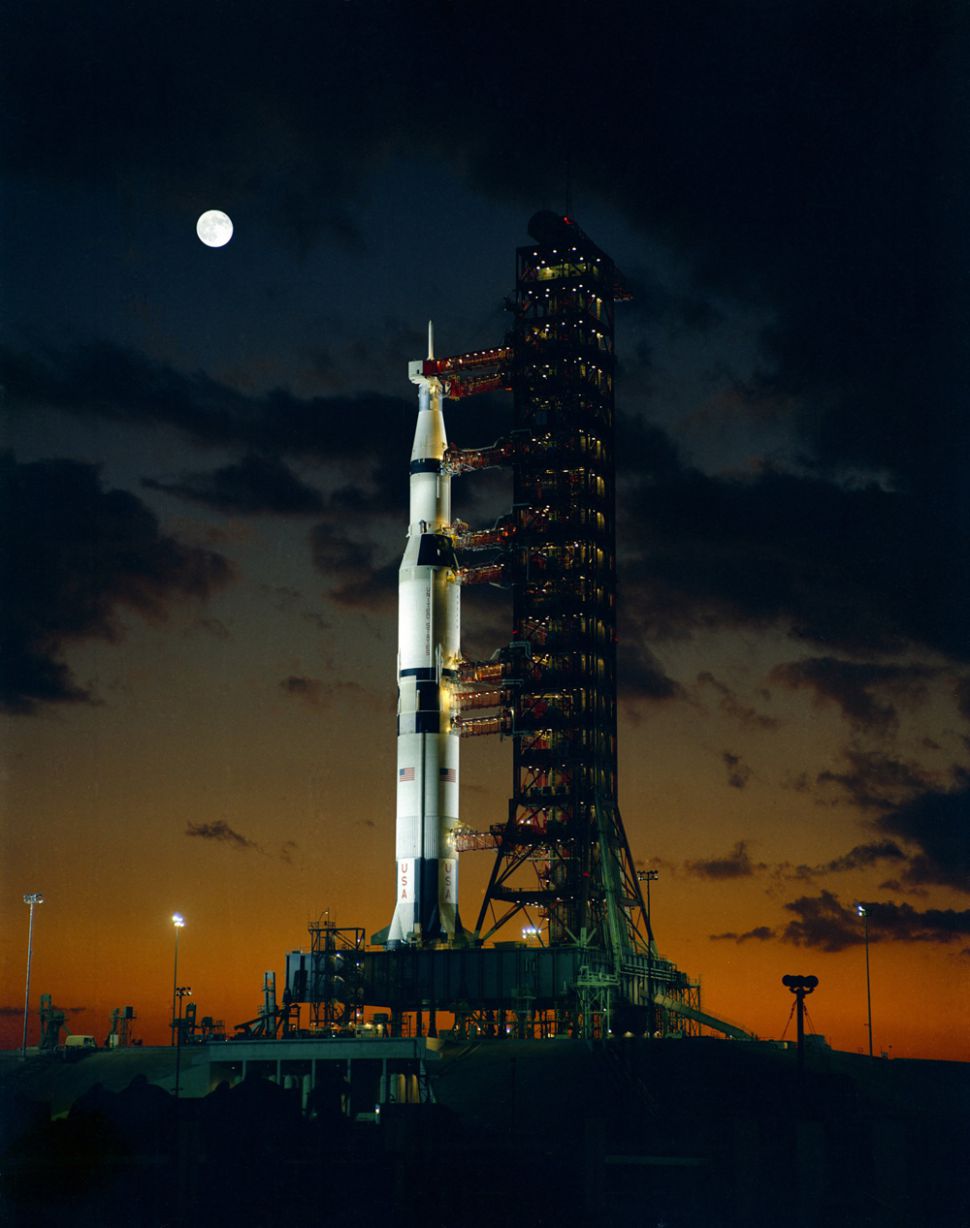Moon Landing Dress Rehearsal 50 Years Ago

In space history 50 years ago, the U.S. was preparing one last 3-man Apollo flight before the actual landing of humans on the moon planned for later that summer. Apollo 10 is often called the “dress rehearsal” for the culmination of the goal of landing people on the moon before the end of the 1960s decade. Apollo 10 would travel a quarter million miles from Earth, coming less than 10 miles away from the lunar surface, without touching down.
Only three Apollo missions had been launched previously. Apollo 7 in 1968 was the first, with a goal of testing the command and service modules (CSM) in Earth orbit. Launched the same year, Apollo 8 was the first manned test of the mighty Saturn V, the most powerful rocket to ever fly (Apollo 7 had used the smaller Saturn 1B rocket). Apollo 8 also propelled the first humans to the moon. An orbital mission only, it was not equipped with a landing vehicle. In 1969 Apollo 9 lifted the first lunar module (LM), an ungainly looking four-legged two-stage spacecraft designed to land astronauts on the moon, into Earth orbit. The LM was put through its paces setting the stage for Apollo 10.
Three experienced astronauts from the pre-Apollo two-manned Gemini program crewed Apollo 10. They were commander (CDR) Tom Stafford, command module pilot (CMP) John Young and lunar module pilot (LMP) Eugene Cernan. Between them, the three had occupied five seats on Gemini flights. Young and Cernan would go on to command their own separate Apollo expeditions and walk on the moon.
On its surface the mission seemed like a marriage of Apollo 8 and 9. It was a return to the moon as in Apollo 8, but this time with a LM. And while Apollo 9 tested the LM in Earth orbit, Apollo 10 would haul it off to the moon. Indicative of the popularity at the time of Charles Shultz’s Peanuts cartoon strip, the CSM was code named “Charlie Brown” and the LM received the handle of his pet dog “Snoopy”. Apollo 10 was launched on May 18, 1969 and spent the next eight days in space.
Apollo 10 had other goals as well. According to the Mission Report published one month after the flight, “The LM did everything required for a lunar landing except the actual landing itself,” including validating the ascent and descent propulsion systems in the lunar environment. They observed the primary landing sites for Apollo 11 and also photographed and imaged the lunar surface.
One of the firsts of the mission was the first color TV camera in space. Apollo 7 popularized live television programming from space. But the first three Apollo missions carried black and white cameras that beamed back mostly ghostly images, and often over- or under-exposed. The color camera on Apollo 10 was a paradigm shift. Color television images of the Earth hanging in space were especially popular with TV audiences.
NASA was becoming aware that television from space was very popular among taxpayers who were footing NASA’s bills. It was clear to everyone that in order to please the public, NASA would need to continue televising spectacular events. The trend was obvious as TV guide reported just before the launch in its March 10, 1969 edition: “The extraterrestrial telecasts of Apollo 7, 8 and 9 gave every man, woman and child the opportunity to be an arm chair astronaut, taking them where no human had ever gone before.” TV Guide went on to predict that “Apollo 10 and 11 are the critical flights in the manned space program – and in space TV. If the telecasts succeed, the arguments for letting the public ride along in future interplanetary travel will be overwhelming.”
The next stop for Apollo would be the moon’s Mare Tranquillitatis (a.k.a. Sea of Tranquility).
Here are local astronomical events for this month.
The Westminster Astronomical Society’s (WASI’s) next happy hour star party at Milkhouse Brewery is planned for May 10, from 5-9 p.m. The safe solar telescope observing is free and weather permitting. The tap room is open rain or shine and located at 8253 Dollyhyde Rd, Mt. Airy, across the line in Frederick County, near Libertytown.
A program is planned for the following night, Saturday, May 11 at 8:00 p.m. in the Bear Branch Nature Center (BBNC) planetarium. It will be followed, weather permitting, by astronomical observing at the co-located B.F. Roelke Memorial Observatory. Reserve your seat in the planetarium by calling 410-386-2103. Observatory observing is free and starts after the planetarium show.
At 7:30 p.m. on Saturday, May 18, join WASI members at Charlotte’s Quest Nature Center and Observatory for monthly telescopic observing. The address is 3400 Wilhelm Lane, Manchester.
–Curt Roelle
